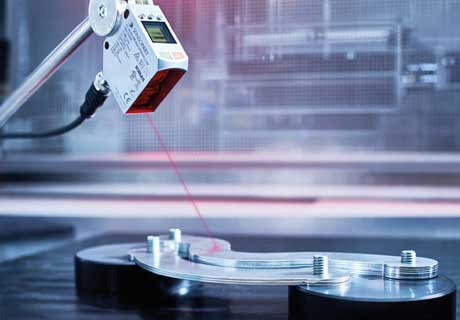Are Photoelectric Sensors Analog or Digital?
Key Takeaway
Photoelectric sensors can be either analog or digital. Analog sensors provide a continuous output that varies with the changes in light received. Digital sensors offer discrete (on/off) outputs and are typically used when precise, binary results are needed. The choice depends on the application’s complexity and requirements.
Analog Sensor Characteristics
Analog photoelectric sensors provide a continuous signal that varies in amplitude based on the intensity of the received light. This type of output is beneficial for applications requiring detailed analysis of the signal to determine not just the presence but the precise position or distance of an object. They excel in applications where gradual changes in light intensity need to be monitored continuously, such as in material handling where exact positioning is crucial.
The strength of analog sensors lies in their ability to provide a range of values, offering a nuanced understanding of the environment. This makes them ideal for complex processing tasks where variations in detection need to be finely adjusted.

Digital Sensor Characteristics
In contrast, digital sensors output a simple on or off signal, indicating whether the light beam has been interrupted. This binary output is less complex than that of analog sensors, making digital sensors easier to integrate and manage within most industrial systems. They are preferred in applications where the absolute presence or absence of an object is what needs to be detected, such as on assembly lines for confirming part placement.
Digital sensors are valued for their simplicity and reliability. They provide straightforward, clear signals that are ideal for quick decision-making processes in automated systems.
Benefits of Each Type
Analog sensors are particularly useful in environments where precision is paramount, allowing for continuous monitoring and fine adjustments. Their ability to measure variable distances and object characteristics can greatly enhance process control in complex manufacturing settings.
Digital sensors, meanwhile, offer ease of use and lower complexity, which can be advantageous in high-volume or simpler applications. Their robust nature makes them suitable for harsh environments where precision is less critical but reliability is essential.
How to Choose Between Analog and Digital
When selecting between analog and digital photoelectric sensors, it’s essential to evaluate the specific requirements of your application. Analog sensors are ideal for scenarios where continuous monitoring and detailed data analysis are necessary. These sensors excel in environments requiring high precision because they provide variable voltage signals that directly correlate with the detected light levels, allowing for nuanced adjustments in response to changing conditions.
On the other hand, Omron digital Photo sensors offer a simple, binary output that makes them easier to integrate and more suitable for applications where the primary requirement is to determine the presence or absence of an object without the need for gradient measurements. Consider the nature of the task, the environmental factors, and how the sensor’s output will be used in your system’s operation to determine which type of sensor aligns best with your needs.
Real-World Applications and Examples
In automotive manufacturing, analog sensors might be used to ensure components are welded at the correct depth, while digital sensors could be used to verify the presence of a component before the welding process begins. In packaging, digital sensors are commonly employed to confirm that boxes are sealed and ready for shipping, whereas analog sensors might monitor the fill levels of a product continuously as it moves down the line.
Conclusion
Whether to go with an analog or digital photoelectric sensor comes down to the specific requirements of your operational environment and what you need the sensor to achieve. By understanding the unique benefits of each type and considering your application’s specific demands, you can make an informed decision that optimizes efficiency, accuracy, and reliability in your systems. Remember, the right sensor not only meets your current needs but also accommodates potential future challenges.
